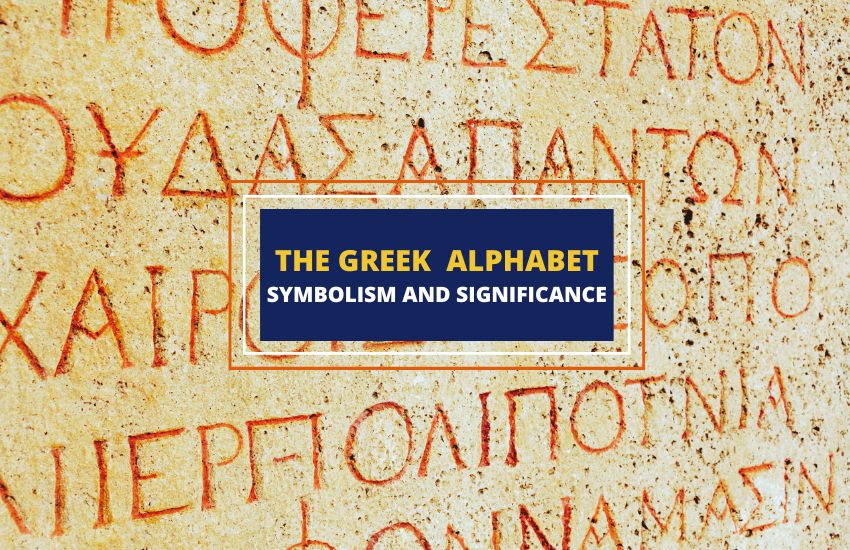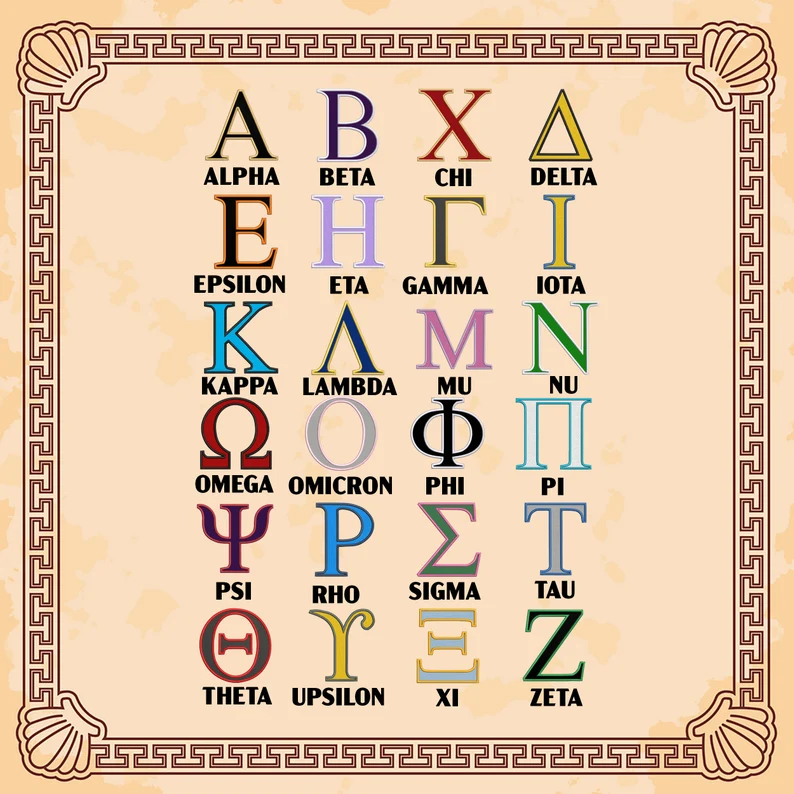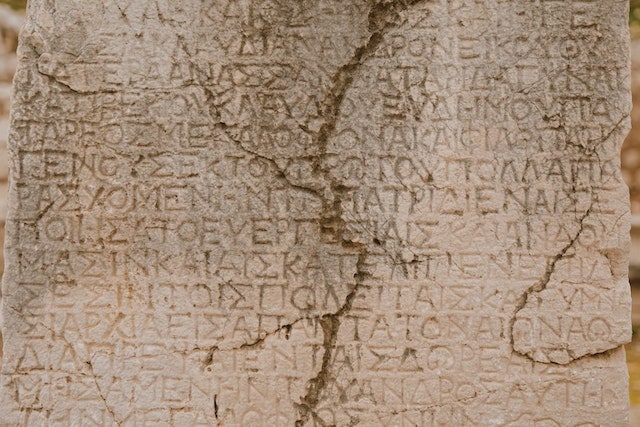
Table of Contents
The Greek alphabet is quite an effective writing system. Its long and celebrated history has left us with an enduring heritage. The Greek alphabet is the ancestor of numerous contemporary alphabets we use today, including the Latin letter set used in English and other Western dialects.
Its letters and images have affected arithmetic, material science, artistry, and writing. The Greek letters are essential in shaping our insight into the world.
In this article, we’ll examine the historical backdrop of the Greek letters, their beginnings, construction, significance, influence on mainstream society, logical examination, and the English language.
The Greek Alphabet

The early Greek alphabet included 24 letters, which historians like to classify into two essential groups: seven vowels and seventeen consonants. Although the Greek language has changed since the ninth century, the outline of the letters remains virtually the same.
Each letter of the Greek alphabet has a distinct sound and is often used in various scientific, mathematical, and cultural contexts.
Many of these letters hold meanings in the English language. For example, today the phrases Alpha and Omega, Beta testing, Gamma rays, Delta force, Sigma personality, Chi Rho and so on are all derived from the names of the Greek letters. Each of these letters also symbolize various concepts.
Symbolism of Each Greek Letter

There’s probably no other alphabet out there whose letter names have entered the English language as much as the Greek alphabet. Most of these are probably familiar to you, even if you didn’t know that they were Greek letters.
For such an old alphabet, it’s not surprising that there are many meanings associated with each letter. Here’s a quick overview of the traditional meanings associated with each Greek character:
- Alpha (Α, α): The first letter of the Greek alphabet, symbolizing beginnings, leadership, and strength.
- Beta (Β, β): The second letter, often associated with balance, harmony, and cooperation.
- Gamma (Γ, γ): The third letter, symbolizes transformation, knowledge, and growth.
- Delta (Δ, δ): The fourth letter, represents change, transition, and difference.
- Epsilon (Ε, ε): The fifth letter, associated with harmony, equilibrium, and stability.
- Zeta (Ζ, ζ): The sixth letter, symbolizes zest, enthusiasm, and liveliness.
- Eta (Η, η): The seventh letter, often associated with healing, peace, and serenity.
- Theta (Θ, θ): The eighth letter, representing spirituality, meditation, and divine wisdom.
- Iota (Ι, ι): The ninth letter, symbolizes individuality, focus, and precision.
- Kappa (Κ, κ): The tenth letter, associated with knowledge, education, and intellectual pursuits.
- Lambda (Λ, λ): The eleventh letter, represents learning, discovery, and enlightenment.
- Mu (Μ, μ): The twelfth letter, often associated with measurement, calculation, and accuracy.
- Nu (Ν, ν): The thirteenth letter, symbolizes new beginnings, creativity, and innovation.
- Xi (Ξ, ξ): The fourteenth letter, is associated with strength, resilience, and determination.
- Omicron (Ο, ο): The fifteenth letter, often representing wholeness, completion, and inclusivity.
- Pi (Π, π): The sixteenth letter, symbolizes perfection, cycles, and the infinite.
- Rho (Ρ, ρ): The seventeenth letter, associated with energy, motion, and dynamic forces.
- Sigma (Σ, σ/ς): The eighteenth letter, representing unity, collaboration, and collective consciousness.
- Tau (Τ, τ): The nineteenth letter, often associated with stability, endurance, and self-discipline.
- Upsilon (Υ, υ): The twentieth letter, symbolizes spiritual insight, intuition, and empathy.
- Phi (Φ, φ): The twenty-first letter, representing harmony, beauty, and artistic expression.
- Chi (Χ, χ): The twenty-second letter, often associated with life force, vitality, and balance.
- Psi (Ψ, ψ): The twenty-third letter, symbolizes the mind, consciousness, and psychic abilities.
- Omega (Ω, ω): The twenty-fourth and final letter, representing completion, wholeness, and the divine.
The Humble Beginnings of the Greek Alphabet
The Greek alphabet originated around the ninth century BCE. It heavily borrowed from the Phoenician alphabet, modifying and adapting some of the letters. For reference, here are the 22 letters of the Phoenician alphabet.
- Aleph
- Bet
- Gimel
- Dalet
- He
- Waw
- Zayin
- Heth
- Teth
- Yodh
- Kaph
- Lamedh
- Mem
- Nun
- Samekh
- Ayin
- Pe
- Tsade
- Qoph
- Resh
- Shin
- Taw
The ancient Greeks appropriated this framework and formed it into a principal part of their language and culture.
The Greeks added vowels to the Phoenician letters. Then, Greek letters became the main form of writing, creating a logical framework of symbols that indicate vowels and consonants.
Another trademark that distinguishes Greek letters from others is that the names of their letters frequently have either literal or metaphorical importance.
Alpha (α) and beta (β) come from the Phoenician aleph (meaning bull) and beth (meaning home), respectively. These letters highlight a close and intricate bond between the Greek and Phoenician cultures and an indivisible connection between the two alphabets.
How Does the Greek Alphabet Function?

The Greek alphabet is different from other writing systems because of how it looks and what it can do. The Greek letter set, which comprises 24 letters, conveys the sounds and meaning of the Greek language.
Earlier writing systems, such as the Phoenician alphabet, also included vowels. However, the Greek alphabet made a significant contribution by introducing separate symbols for each vowel sound, allowing for more precise representation of speech and language. This innovation in vowel representation greatly influenced subsequent alphabets and writing systems.
The introduction of the Greek letter set marked the first time humanity could write vowels and consonants together. This important addition made it possible to get the Greek phonetics right and ensure that people could record their language correctly.
The Legacy of the Greek Alphabet
The Greek alphabet was one of the most recognizable ways to write in human history, and its influence extends beyond the borders of ancient Greece. The creation of the alphabet impacted the improvement of correspondence in the west and different parts of the globe.
The Latin alphabet we use in most Western dialects, like English, French, and Spanish, takes much inspiration from Greek. The Romans took many Greek letters and made them their own.
The effect of the Greek letter set is visible in other corners of Europe. Cyrillic, used in Slavic languages like Ukrainian and Bulgarian, has its roots in the Greek writing system.
Greek Alphabet and Sciences

The introduction of the Greek alphabet impacted the language used in mathematics and the sciences. The accuracy and adaptability of the Greek script are fascinating. We can see how convenient the Greek script is when we use it to express the most complex scientific notions.
The Greek letter pi is a symbol for the ratio of the diameter to the circumference of a circle. This constant appears in seemingly endless mathematical calculations and is necessary for understanding various geometric and trigonometric principles.
Other Greek letters common in mathematics include alpha, beta, gamma, and theta. These Greek letters denote angles, variables, and other mathematical functions. In physics and chemistry, the symbol lambda denotes the wavelength, and in mechanics, the symbol mu indicates the coefficient of friction.
In addition to their functions in practical applications, Greek letters have symbolic implications in fields such as mathematics and science. For instance, the letter sigma denotes standard deviation in statistics, and the Greek delta represents some change.
Greek Alphabet Has Made Its Way Into Pop Culture
The Greek alphabet has a huge influence on our popular culture and symbolism. Greek letters symbolize various groups, including organizations, companies, and cultural movements.
One of the Greek letters’ most notable purposes is naming different fraternities and sororities. These groups use Greek to distinguish themselves, with each letter representing a thought or an aspect of their philosophy.
Films like “Animal House” and “Legally Blonde” depict the crazy shenanigans of fraternities and sororities in American schools. These images are so iconic that we always associate these Greek letters with hoodies and shirts, crazy parties, and whole societies.
Another fun and yummy way the Greek letters crept into our culture is through Pi Day (the value of pi is 3.14), which we celebrate on March 14th.
Wrapping Up
The Greek alphabet remains vital in modern culture because of its significant historical legacy. Starting humbly in ancient Greece, it became a fundamental aspect of Western culture, language, and education.
The Greek alphabet will undoubtedly continue to hold a critical place in our understanding of the captivating world ahead. We hope you enjoyed reading about the Greek alphabet, and if you’re hungry, remember there’s always Pi.








